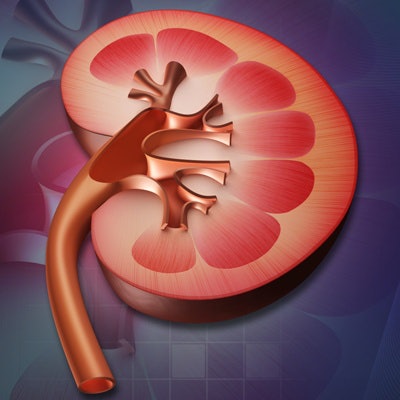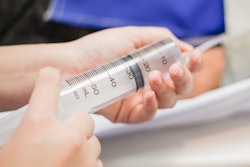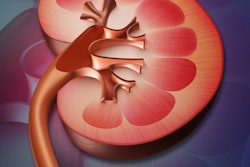
Patients who present in the emergency department (ED) and undergo advanced CT and MR imaging with both iodine- and gadolinium-based contrast are at higher risk of postcontrast acute kidney injury (PC-AKI).
The findings point to a need to create safeguards tailored to the ED for patients undergoing advanced imaging with contrast, wrote a team led by Dr. Changshin Kang of Chungnam National University Hospital in Daejeon, South Korea. The results were published April 26 in Kidney Research and Clinical Practice.
"Well-designed prospective studies are needed to investigate risk factors for PC-AKI and develop emergency department setting-specific preventive strategies," the authors noted.
Contrast media can be critical for effective CT and MR imaging. Yet iodine- and gadolinium-based agents have been associated with kidney injury, and if these agents are administered within a short period, the risk of injury increases, the team explained. Although it's rare that patients receive sequential injections of these contrast materials, it does happen, especially in the ED.
Kang's and Han's group sought to evaluate incidence of PC-AKI in 6,318 individuals who presented to the ED between 2016 and 2021, comparing a cohort of those who received a single injection of iodine-based contrast for a CT exam to those who received sequential injections of iodine-based and gadolinium-based contrast for CT and MRI exams. Of the total study cohort, 139 were in the iodine-based plus gadolinium-based contrast group. Most patients (37.3%) arrived in the ED due to trauma.
The investigators found that the incidence of postcontrast acute kidney injury was higher in the group of patients who had both iodine- and gadolinium-based contrast than in the group that had iodine-based contrast alone, at 27.3% compared to 10.9% (p < 0.001). They also learned that sequential administration of these contrast agents was a risk factor for postcontrast acute kidney injury, while single administration was not. Further analysis found that in the sequential contrast administration patient cohort, osmolality and a patient's estimated glomerular filtration rate (eGFR) were associated with postcontrast acute kidney injury as well.
"Compared with a single administration of iodine-based contrast medium alone, sequential administration of iodine-based contrast medium and gadolinium-based contrast agent during a single emergency department visit might be a risk factor for PC-AKI ... [and] osmolality and estimated glomerular filtration rate might be associated with postcontrast acute kidney injury after sequential administration," the group wrote.
More research is needed, the authors concluded.
"A multicenter study with a large cohort is required to enhance the generalizability of our results and their easy application in a clinical environment," they wrote.



















